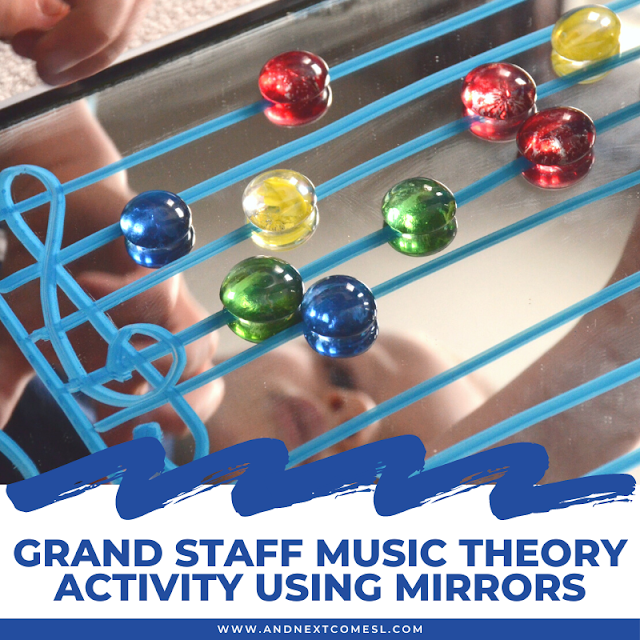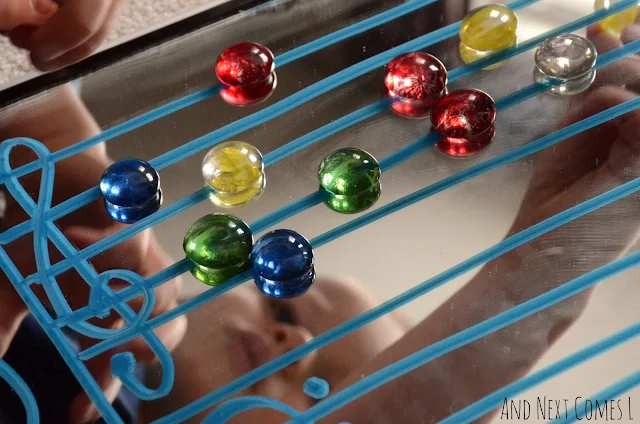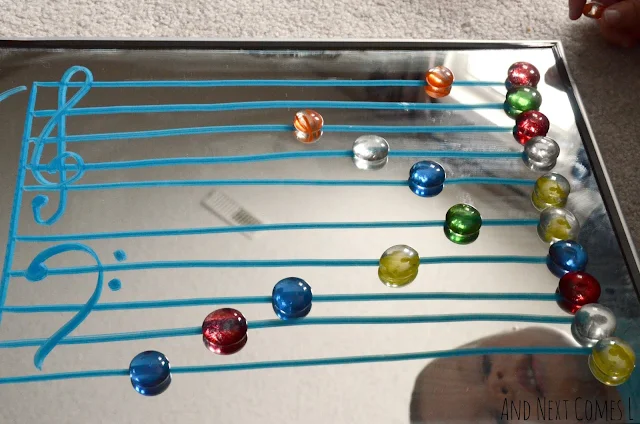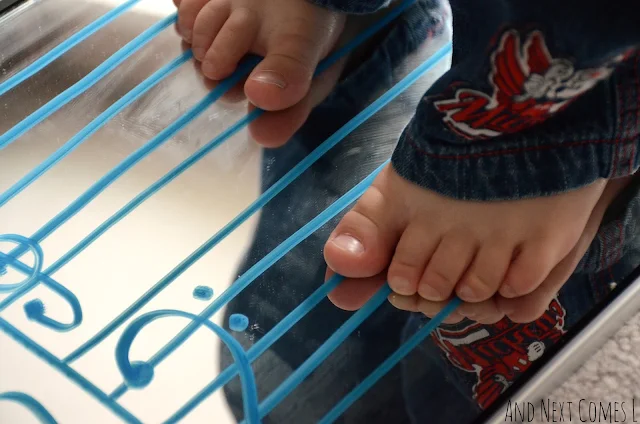Growing up, I always had to do a boring music theory worksheet or two every week with my piano lessons.
My goal as a piano teacher, however, has always been to make learning about different music theory elements fun and engaging. And as hands-on as possible. More games, less worksheets.
So, as a piano teacher, it's probably unsurprising that I've created a lot of music activities for my boys. I've even made fun free music theory printables for them (see some of the music I spy games here for instance).
However, this is the first time that we have used mirrors to explore music theory. And I love how this music theory activity turned out! It's so pretty and inviting.
I also love how this activity can be tailored to different ages or used for teaching a variety of music theory concepts. You can use it to teach basic music theory such as lines and spaces or use it to do more advanced music theory review. I share some suggestions below.
What You'll Need for this Grand Staff Music Theory Activity
Teaching the grand staff is really easy and engaging to do with this simple hands-on music activity. Here's what we used:
- Small mirror (ours is from Dollar Tree) - While it's a great item to have on hand for simple music theory exercises like this one, we've used it for other activities as well. It's such a versatile item to have for play!
- Colored glass stones or something similar such as buttons, pom poms, or transparent counters - These will be our music notes to explore different music theory concepts.
- Window markers or crayons or dry erase markers - To draw the grand staff that will be used for music theory review.
To prep this activity, I drew a grand staff on the mirror using the window markers. Then I set out a variety of colored glass stones. Then it's ready for play as that's all you need to do for set up.
Teaching the Grand Staff with a Simple Music Theory Activity!
First, I let the boys explore the materials on their own for a bit to see what they would do with it. I then pointed out how the grand staff has lines and spaces. Identifying the differences between lines and spaces is an important step in reading music, so it's an easy music theory activity for preschool aged children. Additionally, counting the lines and spaces is also preschool friendly.
Older kids can practice note naming by placing the glass stones on the lines and spaces for particular notes. Or you can use this activity to work on intervals (the distances between notes), making chords, or whatever else you might think of.
I'm sure there are plenty of other fun music theory games you can come up with using these materials. But let's look at how my boys explored with the materials.
My oldest, J, started placing glass stones on each line and even counted each line, quickly telling me there were ten lines in total.
Then both of my boys did the same thing with the space notes. They counted the number of space notes on the grand staff, placing a stone in each space as they went along.
Toddlers may also enjoy identifying lines and spaces or counting the number of each on the grand staff. However, sometimes toddlers have other creative ideas in mind...
Like standing on the grand staff...One foot for each clef, I guess! Who needs a hands-on music activity when you can have a feet-on one instead - haha!
And since a mirror was involved, my youngest, K, of course, had to take a peek at himself. That lead to him getting blue marker all over his face. Then J joined in until the mirror (and their faces!) were completely smeared with blue marker. The giggles that erupted from these two were definitely a highlight for me! Whatever makes music theory more fun, hey? Hahaha
I always test out any new music theory games or activities with my boys first before using them with my piano students. So I'll definitely be using this simple music theory activity with mirrors in lessons going forward.
Other Music Theory Game Ideas & Activities You'll Love
Montessori Inspired Rhythm Building Music Activity for Kids
Learning Music Theory with Cars












